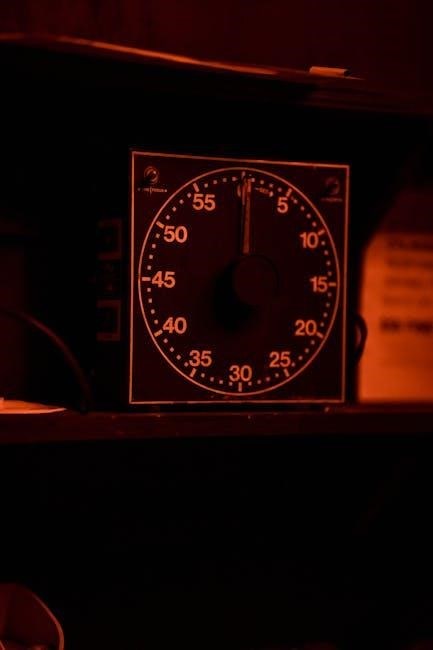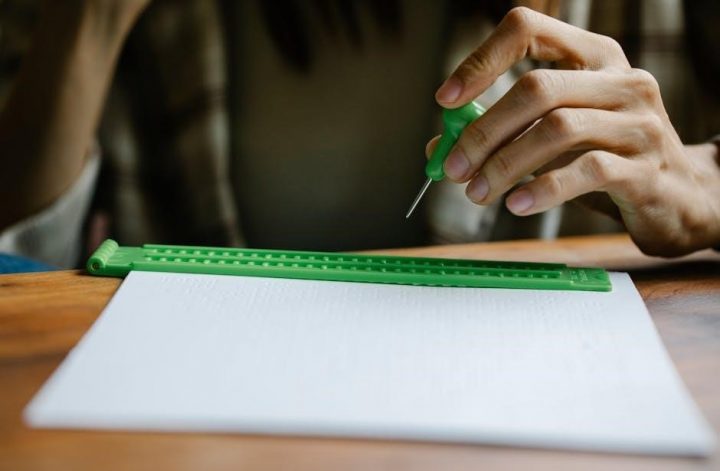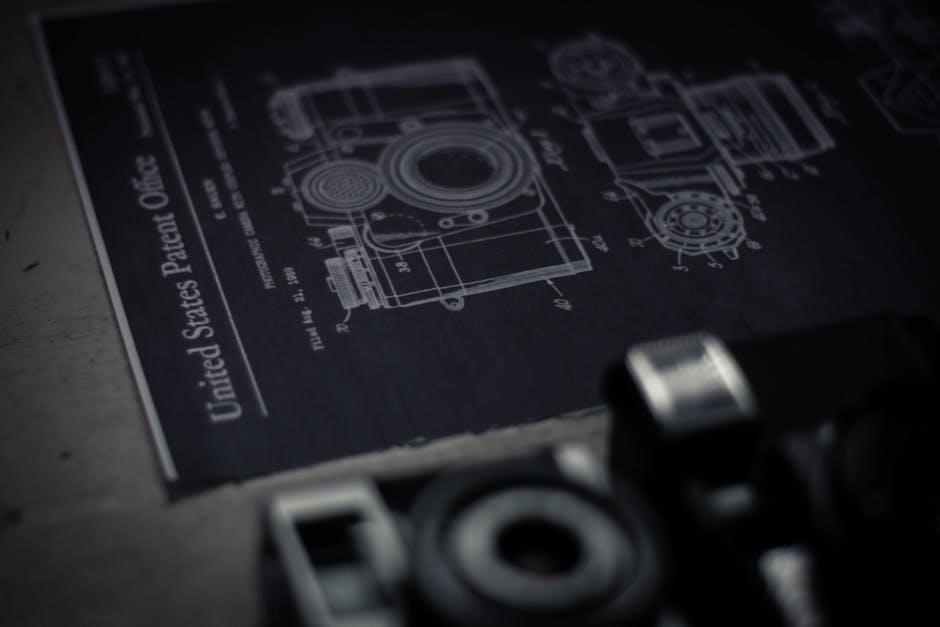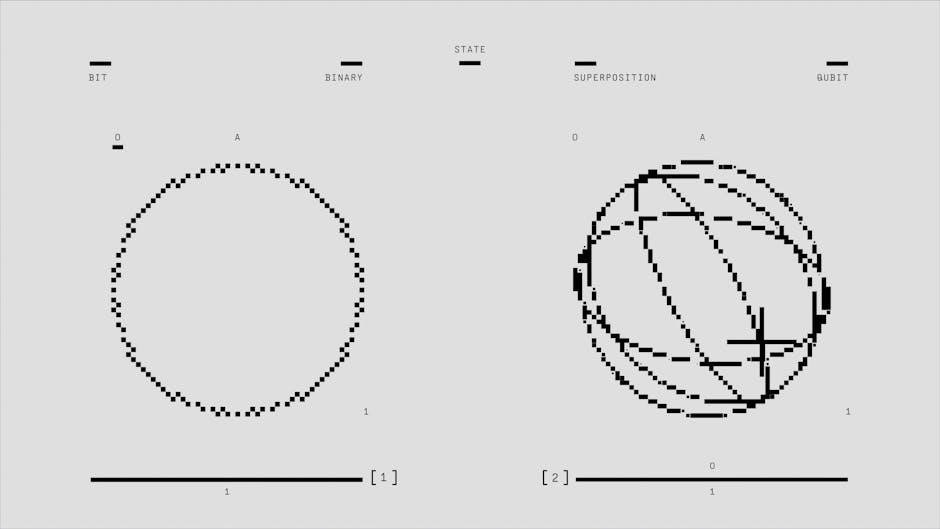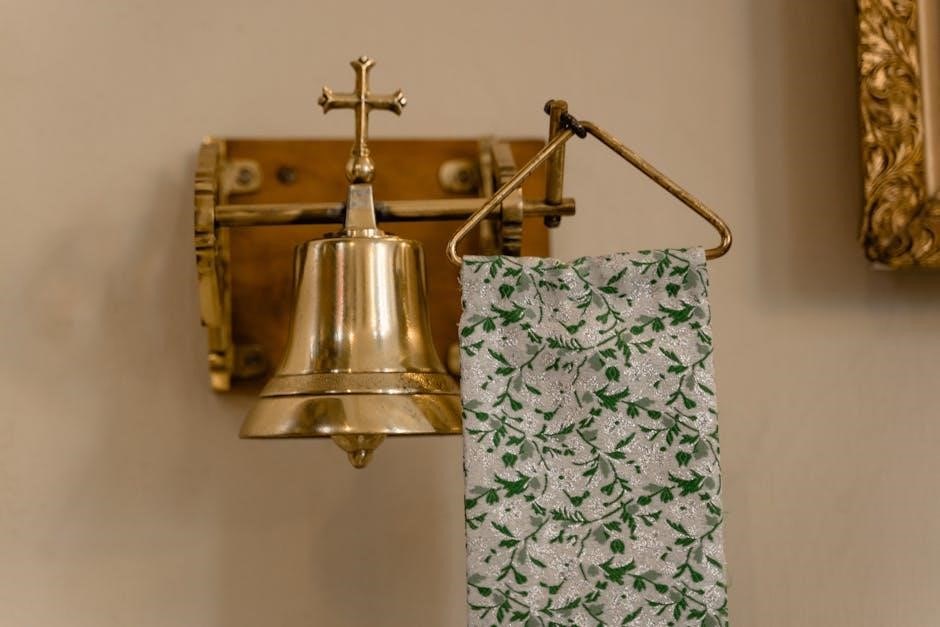Pillsbury Hot Roll Mix Instructions: A Comprehensive Guide
Welcome! This guide provides detailed instructions for baking delicious Pillsbury Hot Rolls. From preheating your oven to enjoying the final product, we’ll cover every step.
Pillsbury baking mixes offer convenience and delightful flavors, perfect for a quick treat or a comforting breakfast. Enjoy these flaky rolls with coffee!
Recent updates mean a larger rise, giving you even more to savor. Let’s begin your baking adventure with these simple, yet effective, instructions!
Understanding the Basics of Pillsbury Hot Roll Mix
Pillsbury Hot Roll Mix is a pre-made baking blend designed for convenience and consistently delicious results. It typically contains flour, sugar, shortening, leavening agents, and flavorings, all pre-measured for ease of use. This eliminates the need to individually measure ingredients, saving valuable time in the kitchen.
The mix works by activating the leavening agents – usually baking powder and/or baking soda – when combined with water and a bit of fat (like melted butter or oil). This creates a light and airy dough. The quality of Pillsbury ensures a reliable rise and a tender crumb.
Understanding that the mix is formulated for a specific outcome is key. While variations are possible (as we’ll explore later), sticking to the basic instructions initially guarantees success. The mix is incredibly versatile, forming the foundation for simple dinner rolls or more elaborate creations like cinnamon rolls.
Recent changes have focused on enhancing the rise, meaning the dough will expand more during baking, resulting in fluffier rolls. This makes understanding the updated instructions even more important!
Different Varieties of Pillsbury Hot Roll Mix
Pillsbury offers several variations of its popular Hot Roll Mix, catering to diverse preferences. The classic Pillsbury Hot Roll Mix is the most widely available, providing a traditional, slightly sweet roll perfect for any meal. However, you can also find options like Pillsbury Grands! Hot Roll Mix, designed to create larger, bakery-style rolls.

Furthermore, seasonal and limited-edition varieties occasionally appear, featuring unique flavors or additions. While the core instructions remain largely consistent across these types, slight adjustments to baking time or temperature might be necessary, always check the packaging!
It’s important to note that the size of the mix package also influences baking parameters. Larger packages yield more rolls and may require a slightly longer baking duration. Always refer to the specific instructions printed on the box you are using for optimal results.
Regardless of the variety, Pillsbury aims for consistent quality and ease of use, making homemade rolls accessible to bakers of all skill levels.

Standard Baking Instructions: Oven Temperature & Time
Generally, Pillsbury Hot Roll Mix requires an oven preheated to either 350°F (175°C) or 400°F (200°C), depending on the specific product and package instructions. It’s crucial to verify the temperature indicated on your particular box, as variations exist.
The typical baking time ranges from 16 to 20 minutes. However, this is a guideline; visual cues are more reliable than strictly adhering to the timer. Begin checking for doneness around 16 minutes. The rolls are usually ready when they achieve a golden brown color.
For some varieties, uncovering the dough midway through baking is recommended to promote even browning. Always remove the rolls immediately from the pan after baking and place them on a wire rack to prevent sogginess.
Remember, oven calibration can vary, so monitoring the rolls closely is essential for perfect results. A slightly longer or shorter baking time may be needed.
Preparing the Baking Pan: Spray vs. Butter
Proper pan preparation is vital for preventing Pillsbury Hot Rolls from sticking and ensuring easy removal. The recommended method often involves coating the baking pan – typically a 13×9 inch – with a non-stick agent.
Cooking spray, particularly Crisco, is frequently suggested for its effectiveness. Ensure you thoroughly coat the bottom of the pan. However, some bakers prefer butter. If using butter, it’s best to soften it and spread it evenly across the pan’s surface.
While spray offers convenience, butter contributes to a richer flavor and slightly crispier edges. Experiment to discover your preference! Regardless of your choice, avoid over-greasing, as this can lead to flat rolls.
A well-prepared pan guarantees beautifully formed rolls that release cleanly, making for a more enjoyable baking experience and presentation;
The Importance of Dough Temperature

Dough temperature significantly impacts the final texture of your Pillsbury Hot Rolls. Ideally, the dough should be at a comfortable, workable temperature – not too cold, not too warm – for optimal rising and baking.
Allowing the dough to sit at room temperature for approximately one hour before rolling out is often recommended. This softens the dough, making it easier to handle and shape without tearing. Cold dough is stiff and difficult to work with.
However, avoid letting the dough get excessively warm, as this can lead to over-proofing and a dense, less fluffy result. A slightly cool, pliable dough is the sweet spot for achieving light and airy rolls.
Maintaining the correct temperature ensures a consistent rise and a delightful, tender crumb in your finished Pillsbury Hot Rolls.
Rising Time & Room Temperature Considerations
Rising time for Pillsbury Hot Roll Mix is heavily influenced by your room temperature. A warmer kitchen (around 75-80°F) will encourage a faster rise, potentially reducing the required time. Conversely, a cooler environment will necessitate a longer rising period.
Generally, allowing the dough to rise in a warm, draft-free location for the time specified on the package is crucial. Covering the dough with a clean cloth prevents it from drying out during this process.
Recent changes to the mix now result in a larger rise, so monitor the dough’s progress closely. It should approximately double in size. Don’t rely solely on time; visual cues are key!
Adjust rising time based on your kitchen’s conditions to ensure perfectly fluffy Pillsbury Hot Rolls every time. Patience is rewarded with a superior texture.
Checking for Doneness: Visual Cues
Determining when your Pillsbury Hot Rolls are perfectly baked relies on observing key visual cues. The most prominent sign is a golden brown color across the tops of the rolls. This indicates sufficient heat exposure and Maillard reaction development.
Edges should also appear lightly browned and slightly crisp. Gently lifting a roll from the pan can reveal a fully cooked underside – it shouldn’t be doughy or pale.
Remember, the baking time (typically 16-20 minutes at 400°F or 16-18 minutes at 350°F) is a guideline. Ovens vary, so visual inspection is paramount.

If the rolls are browning too quickly, reduce the oven temperature slightly. A toothpick inserted into the center should come out clean, confirming complete cooking. Trust your eyes and enjoy!
Cooling the Rolls: Preventing Stickiness
Properly cooling your freshly baked Pillsbury Hot Rolls is crucial to prevent them from sticking together or to the baking pan. Immediately after removing the rolls from the oven, transfer them to a wire rack. This allows air to circulate, preventing steam buildup and sogginess.
Avoid leaving the rolls in the hot baking pan for an extended period, as residual heat will continue to cook them and increase stickiness. A cooling period of approximately 15 minutes is recommended before serving.
If you’ve greased the pan well, removal should be relatively easy. Gently loosen the edges with a spatula if needed. Enjoy warm, but be mindful they’ll be delicate when hot!
Serving Suggestions: Best Accompaniments
Pillsbury Hot Rolls are incredibly versatile and pair beautifully with a wide array of dishes! For a classic breakfast or brunch, serve them alongside scrambled eggs, crispy bacon, and your favorite breakfast sausage. A dollop of sweet cream butter melts wonderfully into the warm, flaky layers.
These rolls also complement savory meals perfectly. They’re fantastic with roasted chicken, hearty stews, or a comforting pot roast. Consider serving them with a side of honey butter for a touch of sweetness.
Don’t forget dessert! Enjoy them with a scoop of vanilla ice cream or a warm mug of hot chocolate. A simple glaze or a sprinkle of cinnamon sugar elevates the experience even further.
Troubleshooting: Common Baking Issues
Rolls Not Rising Properly? Ensure your dough is at the correct temperature and given sufficient rising time. Room temperature is crucial! Check the expiration date of your mix, as older mixes may have reduced leavening power. Avoid drafts during rising.
Rolls Burning Too Quickly? Reduce your oven temperature slightly and check the rolls frequently during the last few minutes of baking. Covering the rolls loosely with foil can also prevent excessive browning. Ensure your oven temperature is accurate.
Rolls Being Too Dense? Overmixing the dough can lead to dense rolls. Handle the dough gently and avoid excessive kneading. Proper rising is also key to a light and fluffy texture. Don’t skip the recommended rising time!
Rolls Not Rising Properly
Addressing a Flat Bake: If your Pillsbury Hot Rolls aren’t rising as expected, several factors could be at play. First, verify your mix isn’t expired; older mixes lose potency. Secondly, ensure the dough reaches a suitable room temperature before baking – approximately one hour is often recommended.
Yeast Activation: While the mix contains yeast, cold temperatures inhibit its activity. A warm environment encourages a good rise. Avoid placing the dough in drafty areas. Gently kneading the dough can also help activate the yeast, but avoid overworking it.
Proper Proofing: Allow adequate rising time as indicated on the package. Patience is key! A larger rise is now expected with recent changes to the mix, so ensure sufficient space for expansion.
Rolls Burning Too Quickly
Preventing a Dark Outcome: If your Pillsbury Hot Rolls are browning too rapidly, your oven temperature might be too high. Double-check the setting against the package instructions – typically 350°F or 400°F. An oven thermometer can confirm accuracy.
Pan Placement: Position the baking pan in the center of the oven to ensure even heat distribution. Avoid placing it too close to the heating element. Reducing the baking time by a few minutes can also help, starting with a check at the lower end of the recommended range.
Shielding the Rolls: If browning persists, lightly tent the rolls with aluminum foil during the last few minutes of baking. This deflects some of the heat, preventing excessive darkening while allowing the interiors to finish cooking.
Rolls Being Too Dense
Achieving Fluffiness: Dense Pillsbury Hot Rolls often indicate insufficient rising. Ensure the dough is left to rise in a warm, draft-free location for the time specified on the package. Room temperature plays a crucial role; colder environments slow down the yeast activity.
Proper Mixing: Avoid overmixing the dough, as this can develop too much gluten, resulting in a tough texture. Gently combine the ingredients until just moistened. Remember, a slightly sticky dough is preferable to an overworked one.
Yeast Vitality: While Pillsbury mix contains yeast, ensuring it’s active is key. If you suspect the yeast is old, a small test with warm water and sugar can confirm its viability before proceeding with the recipe. A larger rise is now standard, so allow ample time!
Variations & Add-Ins: Enhancing the Flavor
Beyond the Basics: Pillsbury Hot Roll Mix is a fantastic base for creative flavor combinations! Elevate your baking with simple additions that transform these rolls into something truly special.

Sweet Sensations: For a classic treat, incorporate cinnamon and sugar into the dough before rolling. A generous sprinkle of both creates irresistible cinnamon rolls. Consider adding a cream cheese frosting after baking for extra indulgence.
Savory Delights: Explore savory options by mixing in shredded cheese – cheddar, mozzarella, or parmesan – along with your favorite herbs like rosemary, thyme, or chives. These cheesy herb rolls are perfect alongside soups or stews. Pecan filling is also a popular choice!
Experimentation is Key: Don’t be afraid to try other additions like chopped nuts, dried fruits, or even a swirl of fruit preserves.
Adding Cinnamon & Sugar
Transforming Simple Rolls: Elevate your Pillsbury Hot Roll Mix with the timeless combination of cinnamon and sugar! This simple addition instantly creates delectable cinnamon rolls, perfect for breakfast or dessert.
The Process: After preparing the dough according to package instructions, gently roll it out onto a lightly floured surface. Evenly sprinkle a generous layer of granulated sugar mixed with ground cinnamon over the dough. A ratio of approximately ¼ cup sugar to 2 tablespoons cinnamon works well, but adjust to your preference.
Rolling & Baking: Carefully roll the dough into a log and slice into individual rolls. Place the rolls in a greased baking pan and allow them to rise as directed. Bake until golden brown, and finish with a luscious cream cheese frosting for an unforgettable treat!
Tip: For an extra burst of flavor, brush the rolls with melted butter before sprinkling on the cinnamon-sugar mixture.
Incorporating Cheese & Herbs
Savory Roll Sensations: Venture beyond sweetness and transform your Pillsbury Hot Roll Mix into savory delights by incorporating cheese and herbs! This creates a versatile side dish or a flavorful snack, perfect with soups or salads.

The Blend: After preparing the dough, gently roll it out. Sprinkle generously with shredded cheese – cheddar, mozzarella, or parmesan all work wonderfully. Then, add your favorite dried or fresh herbs. Rosemary, thyme, oregano, and chives are excellent choices. Approximately ½ cup of cheese and 1-2 tablespoons of herbs are a good starting point.
Rolling & Baking: Roll the dough into a log, slice into rolls, and place in a greased pan. Bake as directed, and enjoy the aromatic, cheesy, herby goodness! A light brushing of garlic butter before baking enhances the savory flavor.
Tip: Experiment with different cheese and herb combinations to discover your perfect savory roll!
Using Pillsbury Hot Roll Mix for Cinnamon Rolls
Beyond Basic Rolls: Did you know Pillsbury Hot Roll Mix is a fantastic base for homemade cinnamon rolls? It’s a convenient shortcut to achieving that warm, comforting treat without starting completely from scratch! This method delivers fluffy, delicious cinnamon rolls with minimal effort.

The Filling: After preparing the dough, roll it out into a rectangle. Spread generously with softened butter, then sprinkle with a mixture of cinnamon and sugar (approximately ½ cup sugar and 2-3 tablespoons cinnamon). You can also add a touch of nutmeg for extra warmth.
Rolling & Baking: Roll the dough tightly into a log, slice into rolls, and place in a greased 9×13 inch pan. Let rise slightly, then bake at 350°F for approximately 16-18 minutes, or until golden brown.
The Icing: Top with your favorite cream cheese frosting for the ultimate cinnamon roll experience!
Adapting the Recipe for Different Pan Sizes
Pan Size Matters: The standard Pillsbury Hot Roll Mix instructions often call for a 13×9 inch baking pan. However, you can successfully adapt the recipe for different pan sizes, though baking times may need adjustment. Using a smaller pan will result in thicker rolls, requiring a longer bake time.
Adjusting for Smaller Pans: If using an 8×8 inch pan, increase the baking time by approximately 5-10 minutes. Ensure the rolls are golden brown and cooked through. For muffin tins, fill each cup about two-thirds full and reduce baking time to 12-16 minutes.
Larger Pans & Even Baking: A larger pan, like a 10×15 inch, will yield thinner rolls and may require a slightly shorter baking time. Always check for doneness using a toothpick – it should come out clean.
Consistent Results: Regardless of the pan, ensure even heat distribution for perfectly baked rolls!
Storage Instructions: Leftover Rolls
Proper Storage is Key: To maintain freshness and prevent your delicious Pillsbury Hot Rolls from becoming stale, proper storage is essential. Allow the rolls to cool completely before storing them.
Short-Term Storage: For consumption within 1-2 days, store leftover rolls in an airtight container at room temperature. This helps retain some of their soft texture. A zip-top bag works well, ensuring all air is removed.
Longer-Term Storage: For longer storage (up to a week), place the cooled rolls in a freezer-safe bag or container. They can be frozen and reheated later. Reheat in the oven or microwave for best results.
Reheating Tips: Briefly microwave or bake to restore a warm, soft texture. A sprinkle of water before reheating can help prevent dryness.
Nutritional Information: A Quick Overview
Understanding the Basics: While indulging in warm, fluffy Pillsbury Hot Rolls is a delightful experience, it’s helpful to have a basic understanding of their nutritional content. Please note that values can vary slightly depending on preparation and serving size.
Key Nutrients: A single roll typically contains approximately 130-150 calories, with around 2-3 grams of fat. Carbohydrates contribute the most significant portion, around 20-25 grams, including some sugar. Protein content is relatively low, around 2-3 grams per roll.
Important Considerations: These rolls are not a significant source of fiber or essential vitamins and minerals. As part of a balanced diet, enjoy them in moderation. Check the packaging for the most accurate and up-to-date nutritional information.
Enjoy Responsibly: Remember to consider portion sizes and incorporate a variety of nutrient-rich foods into your overall eating plan.
Recent Changes to Pillsbury Hot Roll Mix (Larger Rise)
Exciting News for Bakers! Pillsbury has recently reformulated its Hot Roll Mix, resulting in a noticeably larger rise during baking. This enhancement provides consumers with even fluffier and more substantial rolls, elevating the baking experience.
What’s Changed? The updated formula allows the dough to expand more fully in the oven, creating a lighter and airier texture. This means you’ll get more of the soft, pillowy goodness you love in every bite.
No Changes to Instructions: Fortunately, the baking instructions remain the same! You can continue to use your preferred method and pan size without adjustments. Simply follow the package directions as before.
More to Love: Pillsbury is committed to enhancing its at-home baking range, and this larger rise is a testament to that dedication. Enjoy the improved volume and texture of your freshly baked Hot Rolls!
Comparing Baking Instructions Across Different Mix Sizes
Pillsbury Hot Roll Mix comes in various sizes, but the core baking instructions remain remarkably consistent. While package sizes differ (e.g., family size, individual servings), the fundamental steps are largely the same, ensuring ease of use for all bakers.
Temperature Consistency: Regardless of the mix size, preheating your oven to either 350°F or 400°F is standard, depending on the specific product instructions. Always verify the temperature on the package.
Baking Time Variations: Larger mix sizes generally require slightly longer baking times – typically ranging from 16 to 20 minutes – to ensure thorough cooking. Smaller sizes may bake in as little as 12-15 minutes.
Pan Preparation: Coating your baking pan with no-stick cooking spray (like Crisco) is universally recommended. Some instructions suggest buttering the pan for enhanced flavor and easier release.
Always check the package!
Tips for Perfectly Fluffy Rolls Every Time
Achieving incredibly fluffy Pillsbury Hot Rolls is surprisingly simple! Begin by ensuring your ingredients are fresh, and avoid overmixing the dough – gentle handling is key. Allowing the dough to rest at room temperature for about an hour before baking can significantly improve its texture.
Proper Pan Preparation: Thoroughly coating your baking pan with no-stick cooking spray, or even butter, prevents sticking and promotes even rising. Don’t skip this step!
Oven Temperature Accuracy: Verify your oven temperature with an oven thermometer to ensure accurate baking. Consistent heat is crucial for optimal fluffiness.
Don’t Overbake: Remove the rolls when they’re golden brown, as overbaking can lead to dryness. Immediately transfer them to a wire rack to cool, preventing a soggy bottom. Enjoy!







































